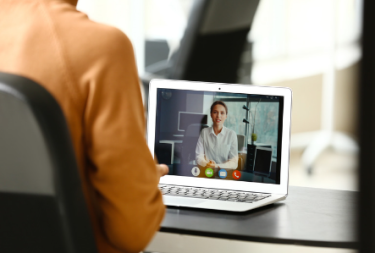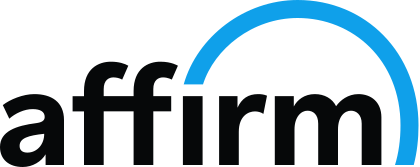 Whether you’re searching for remote or flexible work, relocating, or dealing with clients across the country, its likely you will have at least one remote job interview. According to recent studies, remote work has increased by 159% since 2005. So quite naturally, along with that is the increase the use of the virtual interview.
Whether you’re searching for remote or flexible work, relocating, or dealing with clients across the country, its likely you will have at least one remote job interview. According to recent studies, remote work has increased by 159% since 2005. So quite naturally, along with that is the increase the use of the virtual interview.
So, what do employers get out of the virtual interview format?
Well, first, the virtual interview it widens the available talent pool. Employers can interview candidates from different geographical locations, expanding their reach to a global talent pool without the need for travel. Then there is the cost savings, as virtual interviews eliminate travel expenses for both candidates and interviewers. The virtual interview also provides increased scheduling flexibility, reduces environmental impact, and the ability to record (with consent, of course), allowing for review and comparison by multiple stakeholders, ensuring a thorough and fair evaluation process.
Not to mention the virtual interview allows for enhanced assessment tools such as screen sharing, live coding tests, and online assessments, providing a more comprehensive evaluation of candidates’ skills.
Preparing for these interviews is just a wee bit different than prepping for the traditional face-to-face meetings. So, how do we do it?
Prepare for Success: Before the virtual interview, prepare yourself and your environment
Style your virtual interview workspace: Choose a quiet, well-lit area free from distractions. Go for a neutral, clutter-free background or use virtual backgrounds if preferred.
Test your tech: Check your internet connection, camera, and microphone. In fact, asking your internet service provider (ISP) about available flexible plans and short-term contracts for temporary high-speed internet if you do not already have it. Familiarize yourself with the video conferencing platform (Zoom, Skype, Microsoft Teams, etc.) you’ll be using and do a test call with a friend who can offer constructive feedback.
Adjust lighting and sound: To avoid harsh shadows, be sure to face a natural light source for the virtual interview. If not able to, aim a lamp or reflective surface to bounce light towards you. And don’t forget to check sound to minimize background noise.
Research your role: Conduct thorough research on the company and the interviewers so you can understand how best to relate to them while communicating your knowledge of the organization and your industry.
Print your resume: Prepare a copy of your resume for reference. Now, be sure that it communicates your impact and successes, as well as align with the role you are seeking. (This is the resume writer in me, of course).
Curate your online presence: Update, edit, and curate your social media, website, portfolio, and any other online presence that will be visible to potential employers or clients. It’s your choice to be provocative and edgy online, but just know that employers are looking and that it will have an impact, okay?
During the Virtual Interview: Focus on friendly, professional communication and engagement
Dress professionally: 41% of hiring managers believe that employees who dress more professionally tend to be promoted more often (CareerBuilders). Choose business attire from head to toe, even if you’re only visible from the waist up. How many times have we seen unintended on-camera wardrobe malfunctions derail a career, right?
Maintain eye contact: Look directly into the camera lens instead of looking at the interviewer’s image on the screen. This creates the impression of eye contact. It also shows your attentiveness to details.
Mind your body language: Straight posture exudes confidence. Use hand gestures sparingly and avoid fidgeting, touching your hair, or twirling your rings (used to be MY issue), which can be distracting.
Utilize the STAR Method: Structure your responses using the Situation, Task, Action, Result framework to provide clear and concise answers to behavioral interview questions.
Communicating confidence: Be assertive in your communication. Avoid using minimizing language such as “just” or “sorry”, a habit many people adopt without realizing how it may impact their messaging. Own your achievements and contributions confidently.
Reflect your research: Ask informed questions that reflect your understanding of the company and their role in the industry. Take detailed notes and include the names of your interviewers to help you draft follow-up communication.
After the Interview: Follow up promptly to express gratitude and reinforce interest in the position
Remember to send a thank you note: Did you know according to Accountemps research, 80% of HR managers say thank you notes are helpful when reviewing candidates? I can tell you from personal experience how important this is. I found out from a hiring manager that the only difference between me and the last person I was competing with was that I sent a thank you letter and they did not. So, craft a personalized thank you email to each interviewer within 24 hours. Express appreciation for the opportunity and reiterate enthusiasm for the role, as well as what you bring to the position and your potential value to the company.
Follow up tactfully: If you haven’t heard back in a while, send a polite follow-up email to inquire about the status of the hiring process and whether they need anything further from you.
Continue networking: Stay connected with the interviewer and other professionals in your industry. Seek opportunities to engage in meaningful interactions that showcase your expertise.
Prepare for next steps: Anticipate additional rounds of interviews or assessments and continue stuffing your toolbox with skills and knowledge relevant to the role.
















